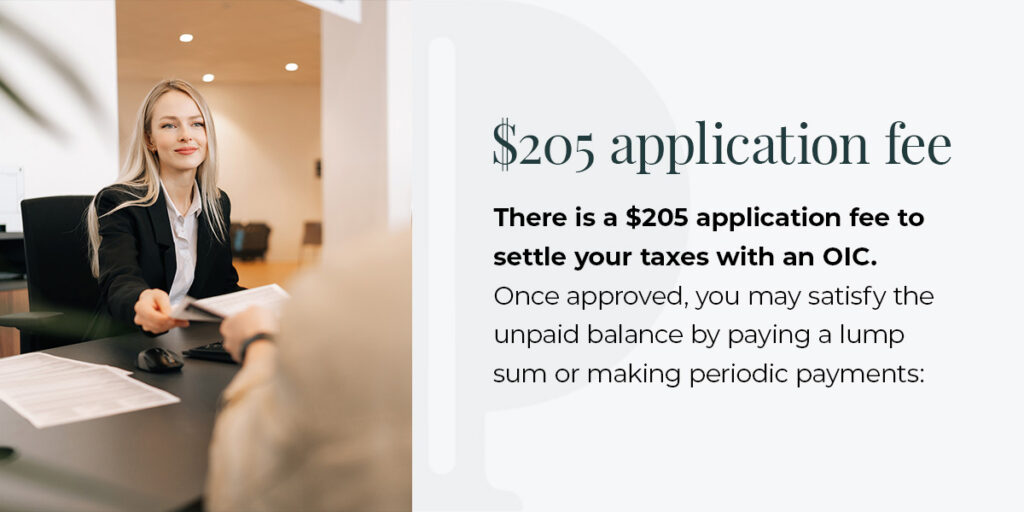
Dealing with the Internal Revenue Service (IRS) can be stressful, especially if you owe back taxes and struggle to make payments. One option for resolving your tax liability is to set up an installment agreement that allows you to pay off your balance over time. Considering that the process can be complex, we have prepared this guide to help you understand how IRS installment agreements work and the options available. You will also learn how to apply, add a new tax year to a payment plan, the possible duration, and other important information.
If you owe the IRS, you can set up a payment plan or installment agreement to make payments over time. A payment plan with the IRS can help you avoid severe consequences, such as wage garnishment or bank account levies.
To set up a payment plan, you can apply online using the IRS online payment agreement tool or fill out the relevant forms and mail them to the IRS. The IRS will review your application and may ask for additional information about your financial situation to determine your eligibility for a payment plan and assess how much you’ll pay each month.
Remember, interest and penalties will continue to accrue on your tax balance until you pay in full. You may also need to pay a setup fee or other costs associated with the payment plan. If you fail to make your payments on time or default on the payment plan, the IRS may take collection action against you, including levying your bank accounts and wages.
If it is challenging to pay off your taxes, work with a tax professional or a reputable tax resolution firm like Polston Tax to explore your options. Resolving your unpaid tax issues may include negotiating with the IRS to set up an installment agreement, seeking legal advice or exploring other options such as an offer in compromise (OIC) or currently not collectible (CNC) status.
To set up an installment agreement, you will need the following information:
The payment plan could be short-term or long-term. If you owe less than $100,000, you may qualify for a short-term payment plan, which gives you an additional 180 days to pay. A long-term payment plan can be as long as six years and is usually available to individual taxpayers who owe $50,000 or less, including penalties and interests. Businesses owing $25,000 or less may be eligible for long-term payment plans after filing all required returns. Independent contractors and sole proprietors can apply for payment plans as individuals.
Typically, the IRS does not allow taxpayers to have two separate installment agreements simultaneously. An installment agreement is a legally binding arrangement between the taxpayer and the IRS to pay off a specific tax liability over a period.
The IRS may allow you to consolidate all your unpaid taxes into a single installment agreement if you have multiple tax balances. Alternatively, you may be able to pay off one balance at a time through a series of installments. However, to do this, you must demonstrate that you are making a good-faith effort to pay off your unpaid taxes and can’t pay your taxes owed in full.
If you default on an installment agreement, the IRS may take collection action against you. Additionally, interest and penalties will continue to accrue on your tax balance until you pay it off.
Since the IRS usually only allows taxpayers to have one active payment plan at a time, you must amend your existing payment plan to include all the outstanding tax balances. You can do so by calling the IRS or visiting a local IRS office to complete Form 9465 with information about the original agreement balance and the expected new balance. Alternatively, you can use the payment agreement platform on the IRS’s website. You may revise the type of plan, payment amount and the monthly payment due date.
If you cannot pay the minimum monthly payment after adding your new tax balance to the existing debt, you must file Form 433-F Collection Information Statement. This step can make you eligible for an OIC, where the IRS allows you to pay less than the amount you owe. Remember, you must amend before the due date to avoid collection actions.
You can request different IRS installment agreements, depending on the amount of taxes owed and your qualifications:
A guaranteed installment agreement is a short-term payment plan designed for taxpayers with relatively small tax balances. To qualify, you must meet the following eligibility requirements:
The streamlined installment agreement qualifies you for an automatic plan without providing additional financial information. This option is available to taxpayers who owe $50,000 or less in taxes, including penalties and interest. The taxpayer must be able to pay the outstanding balance plus penalties and interest within 72 months through direct debit or payroll deduction.
You may require a long-term payment plan, such as a non-streamlined installment agreement. Unlike other installment agreements, you must complete Form 433 to provide the following information to the IRS:
If you cannot repay the installment balance within 72 months, you can contact the IRS to make payment arrangements. A partial payment installment agreement (PPIA) allows you to pay off your balance in monthly installments based on what you can afford after essential living expenses. To qualify, you must prove financial hardship, which could mean gathering supporting documents and bills. Additionally, you must have filed all required tax returns and paid estimated taxes. The following may disqualify you from getting a PPIA:
In assessing whether you qualify and the monthly payment, the IRS will take the following into account:
Examples of income, expenses and assets the IRS may review are:
After the IRS reviews the document, you may have to sell some of your assets to resolve a portion of the liability. Also, the IRS may review your PPIA periodically, such as every two years, and request additional financial information to determine whether circumstances have improved. If your circumstances change, you may be asked to make higher monthly payments. However, you may contest and prove that you cannot afford the increase with the help of a tax professional.

Review your tax balance and verify you owe the stated amount. If you believe you do not owe these taxes, hire a tax attorney and communicate with the IRS. If you receive a notice from the IRS, call the number listed to discuss the amount they claim you owe.
If you owe these taxes, you may be required to fill out a collection information statement, depending on the type of installment request. This form allows the IRS to collect all your financial information to determine what you can afford. If you are applying as an individual, you must submit Form 433-A or 433-F. If you are applying as a business, you will submit Form 433-B.
After that, you must complete Form 9465 — the installment agreement request. The IRS requires you to provide some information, including:
Make sure you can afford the payment — if you default on the payment agreement, you may have to start the whole process over. If you need further guidance in completing this form or estimating what you can afford to pay each month, contact us at Polston Tax.
The interest rate depends on the existence of an installment agreement and whether you file on time. If you do not have an installment agreement and do not file on time, the IRS will notify you of the interest charged on the balance due. This is compounded daily at an interest rate equal to the federal short-term rate plus 3% points, which is currently approximately 5%. Additionally, the IRS will charge penalties for late filings.
If you do not have an installment agreement but file on time, you’ll have to pay a failure-to-pay penalty. The failure-to-pay penalty is at a rate of 0.5% of the tax you owe per month until you pay the tax in full. You can be charged up to a maximum penalty of 25% of the tax due. If you have an installment agreement, the failure-to-pay penalty is cut in half. Interest and failure-to-pay penalties continue until the total outstanding tax balance is paid in full.
The IRS charges user fees depending on the payment plan, application method and eligibility for a fee reduction. For short-term installment agreements, you do not pay a fee if you satisfy the tax balance within 180 days or less. You must pay using any of the following methods:
Long-term payment plans beyond 180 days have a minimal fee if you pay by automatic debit withdrawals online. The amount increases for phone, mail or in-person applications. Other payment methods, such as direct pay, money order or EFTPS, attract a higher fee whether the application is done online, by phone, by mail or in person.
Low-income taxpayers usually pay a reduced amount, but the IRS can waive the fee altogether if you agree to make automatic withdrawals from your bank account to pay the taxes. If you cannot make electronic debt payments, the IRS will reimburse you for the user fees when you clear the tax balance. Generally, to be eligible as a low-income taxpayer, your adjusted gross income must be 250% or less than the federal poverty level. You must file Form 13844, the Application for Reduced User Fee For Installment Agreements.
The IRS does not charge a fee if you pay with a check or a direct debit from your bank account, although credit or debit card payments typically charge a percentage. Other arrangements, such as OICs and CNCs, may also attract fees:

There is a $205 application fee to settle your taxes with an OIC. Once approved, you may satisfy the unpaid balance by paying a lump sum or making periodic payments:
Interest and penalties stop when the agreed-upon tax settlement amount is paid in full. The process for getting an offer in compromise can be complex, which is why we provide Offer in Compromise services to help you arrange a tax settlement with the IRS. First, we’ll determine whether you qualify. Then, we’ll help you submit an application and send your offer to the IRS. Our next steps will vary depending on whether the offer is accepted, returned or rejected. If the IRS rejects your offer, we can help you file an appeal.
There is no fee when the IRS grants you a CNC status, but interests and penalties continue to accrue. It stops collection actions such as wage garnishment and levies.
You have multiple options to pay off your tax balance, including the following:
The interest rates for IRS installment agreements accrue daily until you pay off the tax balance. The sooner you pay your unpaid taxes, the more you save on interest charges. You can pay the full amount or a portion of your balance online or with the help of a dedicated tax attorney at Polston Tax. When you partner with us, we may be able to find ways to reduce the amount of interest and penalties you owe.
The IRS has a limited time to collect your tax balance, known as the collection statute expiration date (CSED). Usually, the IRS only has 10 years to collect on a tax balance when you file your tax return. After that, your balance is forgiven.
Note that the CSED can be extended in certain instances. Also, after requesting an installment agreement, the initial 10-year CSED may be suspended while your request is pending. If the IRS rejects your request, the collection period is delayed for another 30 days. The same applies if you default on your payments and the IRS terminates your installment agreement.
You have the right to appeal if the IRS rejects your request to pay the tax balance in installments. You can also appeal the termination or modification of your installment agreement. Partnering with a tax attorney can help you navigate the appeal process or renegotiate terms with the IRS.

Hire a tax attorney experienced in dealing with the IRS to negotiate successfully. A tax attorney can help you:
Choose a lawyer with the following attributes:
Working with a tax lawyer at Polston Tax can offer several benefits when dealing with tax issues. Here are some of the primary advantages.
If you are facing a complex tax issue or need legal representation in court, working with us at Polston Tax may be your best option.
Working with a reputable group of tax professionals can help you take control of your back taxes and avoid serious consequences, such as wage garnishment or bank account levies. If you have issues with unpaid taxes, work with a tax professional to explore your options for resolving your tax issues.
Polston Tax is a tax resolution firm that helps individuals and businesses with tax issues, including setting up installment agreements with the IRS. We offer a free consultation to help you understand your options for resolving your tax balance. During the consultation, you can ask questions, get advice and learn more about how we can help you. If you owe back taxes to the IRS, contact us now to protect your rights and help you negotiate an affordable repayment plan.
